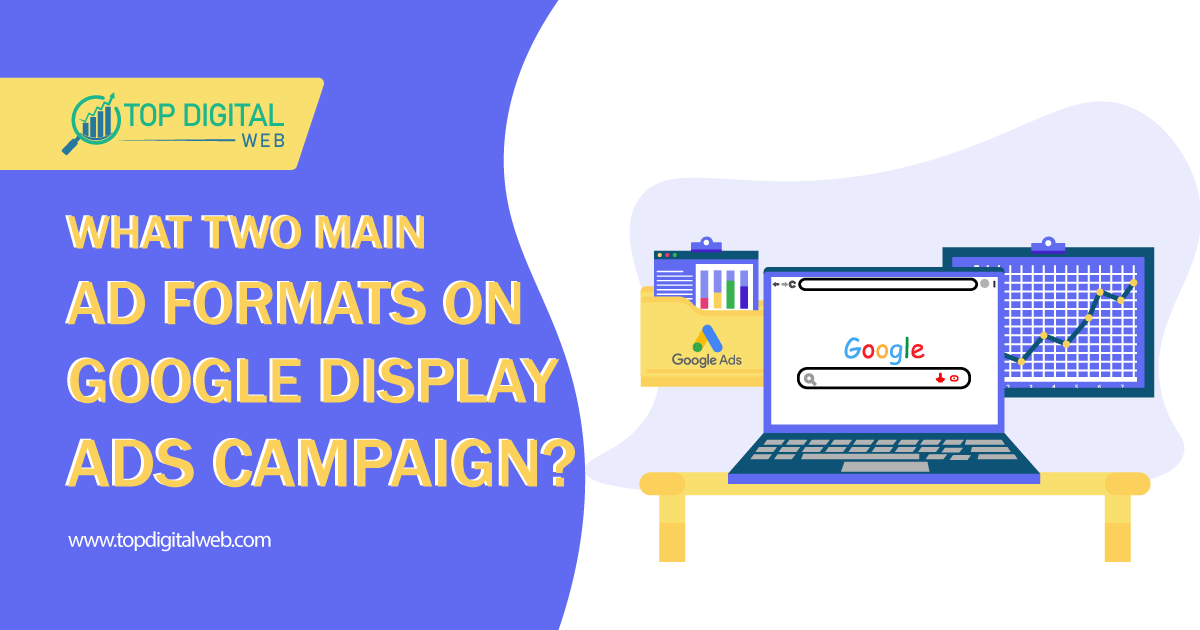In the world of digital marketing, Google Display Ads offers a powerful platform for businesses to showcase their products or services to a vast audience across the internet. As part of an effective display advertising strategy, understanding the main ad formats available is crucial. In this blog post, we will delve into the two primary ad formats on Google Display Ads campaigns, shedding light on their features, benefits, and how they can help your business achieve its marketing objectives.
Image Ads
Image ads are one of the most popular and widely used ad formats on Google Display Ads campaigns. They allow businesses to create visually appealing and eye-catching advertisements to engage with their target audience. Here are some key aspects of image ads:
Visual Appeal: Image ads leverage high-quality graphics, images, and branding elements to capture the attention of users browsing websites within the Google Display Network. They enable businesses to showcase their products, highlight promotions, or create visually compelling brand awareness campaigns.
1.2 Customization Options: Google Display Ads provides various customization options for image ads. You can upload your own images, create interactive ads, and design them to match your brand identity. Customizable features include headline text, call-to-action buttons, and engaging visuals that align with your marketing goals and resonate with your target audience.
1.3 Multiple Sizes and Placements: Image ads can be created in different sizes to fit various ad placements across the Google Display Network. They can appear in banner positions, sidebars, or as responsive ads that automatically adjust their size and format to fit available ad spaces. This flexibility allows your ads to reach users across a wide range of websites and devices.
1.4 Display Network Targeting: Image ads benefit from Google’s robust targeting options. You can choose specific audience demographics, interests, or even target users who have previously interacted with your website. This precise targeting helps ensure that your ads are displayed to the most relevant audience, increasing the chances of driving engagement and conversions.
- Responsive Ads:
Responsive ads are a dynamic ad format designed to adapt to different ad sizes and placements. They are a convenient option for businesses looking to streamline their ad creation process and reach a broader audience. Consider the following key aspects of responsive ads:
2.1 Automated Ad Creation: Responsive ads utilize machine learning algorithms to automatically generate ad variations based on the assets you provide. By analyzing your headlines, descriptions, images, and logos, the system creates ad combinations that are most likely to perform well across different placements and devices.
2.2 Adaptability and Optimization: Responsive ads automatically adjust their size, format, and appearance to fit available ad spaces across the Google Display Network. This adaptability ensures that your ads look visually appealing and are optimized for optimal performance. It eliminates the need to create multiple ad versions manually, saving time and effort.
2.3 Increased Reach: Responsive ads can be displayed in a variety of formats, including text, image, native, and video. This versatility expands your reach and enables your ads to appear on a wide range of websites, apps, and platforms. By reaching a broader audience, you can increase brand awareness, drive traffic, and generate conversions.
2.4 Continuous Optimization: Responsive ads continuously optimize their performance based on user interactions and engagement data. The machine learning algorithms analyze the performance of different ad variations and prioritize those that yield the best results. This ongoing optimization ensures that your ads are continuously refined to maximize their effectiveness.

